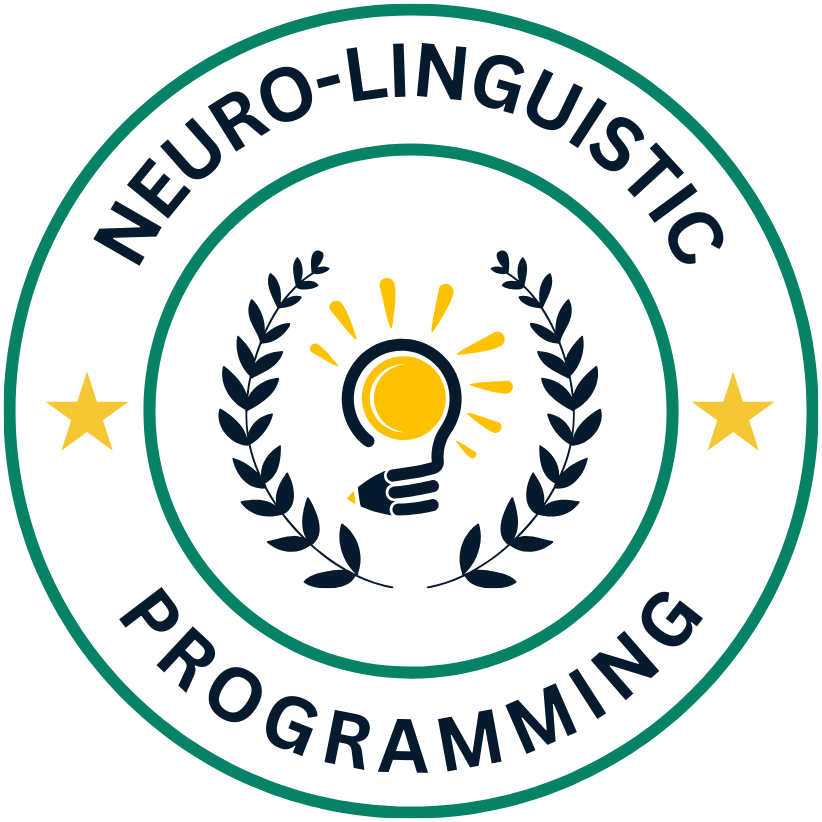You may not realize it, but your communication style can significantly impact your relationships with customers. Understanding the principles of Neuro-Linguistic Programming (NLP) enables you to connect more effectively by enhancing your ability to interpret various communication cues, build rapport, and tailor your message to meet the needs of your audience. By implementing NLP techniques, you can not only improve customer satisfaction but also foster long-lasting connections that are vital for business success.
Understanding Neuro-Linguistic Programming
To fully appreciate the value of Neuro-Linguistic Programming (NLP) in customer communication, it is imperative to grasp its definition and core principles. NLP is a psychological approach that explores the intricate relationship between your neurological processes (neuro), the language you use (linguistic), and your behavioral patterns learned through experience (programming). By applying NLP techniques, you can enhance your communication skills, enabling you to connect with customers on a deeper level and address their needs more effectively.
Definition and Principles
By understanding NLP’s foundational principles, you can leverage these insights in your interactions with customers. The model is based on the premise that all behavior is representational, meaning you create mental representations of your experiences that influence your communication style. Furthermore, NLP emphasizes the importance of sensorial modalities—visual, auditory, and kinesthetic—which can guide you in deciphering how customers perceive information and respond to your messages. Being aware of these principles allows you to adapt your communication strategies to resonate with a diverse audience.
The Role of Language in Communication
Between various forms of communication, language plays a pivotal role in expressing thoughts, emotions, and intentions. In NLP, language is not merely a tool for exchanging information; it is a means to shape perception and influence behavior. The words you choose can create mental imagery, evoke emotions, and elicit specific responses from your audience. Understanding the subtleties of language allows you to tailor your messaging in a way that appeals directly to your customers’ desires and needs.
NeuroLinguistic Programming recognizes that the effectiveness of your communication relies heavily on how well you convey your ideas through language. By choosing words that inspire trust and relatability, you can foster stronger relationships with your customers. Furthermore, the way you structure your sentences and the tone you employ can dramatically affect how your message is received. By mastering the nuances of language, you can enhance your ability to forge connections that matter, ultimately leading to more successful and satisfying interactions with customers.
The Impact of NLP on Customer Interactions
There’s a remarkable shift occurring in how businesses communicate with their customers, and Neuro-Linguistic Programming (NLP) serves as the foundation for this transformation. By leveraging NLP techniques, you can enhance your interactions, making them more meaningful and effective. This approach not only influences your messaging but also enables you to connect with your customers on a deeper level, shaping their perceptions and responses positively. Through the careful application of NLP strategies, you can foster a more engaging customer experience that is both persuasive and empathetic.
Building Rapport with Customers
About establishing trust and connection, building rapport with your customers is an imperative aspect of effective communication. NLP emphasizes mirroring and matching behaviors, language patterns, and emotional states, enabling you to create an environment where customers feel understood and valued. When you consciously apply these techniques, your customers are more likely to resonate with your message, which can lead to stronger relationships and increased loyalty.
Understanding Customer Needs and Responses
Customer interactions are often influenced by their unique needs and responses, and being attuned to these variations can significantly enhance your effectiveness. By applying NLP techniques, you can better read verbal and non-verbal cues, allowing you to adapt your communication style to meet the specific requirements of your customers. This level of awareness not only positions you as a more capable communicator but also helps in resolving concerns or objections that may arise during the interaction.
Considering the varying preferences and emotional states of your customers, tailoring your approach based on their individual needs can lead to improved satisfaction. By listening actively and signaling your understanding through NLP techniques, you can create a very immediate connection, ensuring that customers feel their voices are heard. This understanding deepens client relationships, paving the way for long-lasting loyalty and trust in your brand.
Techniques in NLP for Enhanced Communication
You can significantly improve your customer communication skills using several techniques from Neuro-Linguistic Programming (NLP). These methods are designed to enhance your understanding of how language and behavior shape interactions with others. By applying these techniques, you can create a deeper connection with your customers, leading to more effective and meaningful conversations.
Anchoring and its Application
Below, you will discover how anchoring can be a powerful tool in your communication arsenal. Anchoring is the process of associating a specific emotional state with a unique stimulus, such as a word, gesture, or tone of voice. For example, if you can cultivate a positive state of mind during a productive customer interaction, you might choose to use a specific phrase or gesture as an anchor. In future communications, this anchor can help you access that positive emotional state again, promoting a more engaging and upbeat dialogue.
Reframing Perspectives for Better Engagement
Any effective communicator knows that perspective is everything. Reframing involves shifting your viewpoint or the context of a situation to alter its meaning. By using reframing techniques, you can help your customers see challenges as opportunities or change negative emotions into positive motivations. For instance, rather than viewing a complaint as a setback, you can reframe it as a chance to improve your service, fostering a more collaborative atmosphere that is conducive to engagement.
Enhanced engagement is often achieved when you help your customers view situations from a new angle, leading to a greater sense of ownership and connection. This approach not only encourages positive dialogue but also empowers your customers, making them more likely to participate in productive discussions and solutions. By mastering reframing techniques in your conversations, you can ensure that your communication is impactful and resonates with your audience, paving the way for lasting relationships.
Case Studies: NLP in Action
After examining the fundamentals of Neuro-Linguistic Programming, it’s imperative to look at real-world examples that demonstrate its effectiveness in customer communication. Here are some notable case studies highlighting measurable results achieved through NLP techniques:
- Company A implemented NLP training with a focus on enhancing their sales team’s communication skills, resulting in a 30% increase in monthly sales within six months.
- Company B utilized NLP strategies in their customer service department, leading to a 25% decrease in customer complaints and a 15% increase in customer satisfaction ratings.
- Company C adopted NLP-driven techniques in their marketing campaigns, which boosted engagement by 40% and increased the conversion rate by 20% in just three months.
- Company D integrated NLP methodologies into their negotiation processes, which resulted in securing 50% more partnerships compared to the previous year.
- Company E trained their leadership team in NLP and noted a significant 35% improvement in internal communication, fostering a more collaborative work environment.
Successful Applications in Business
Across industries, businesses are discovering the power of NLP to transform customer interactions. For instance, one retail chain implemented NLP techniques in their staff training, focusing on rapport-building skills. This led to a marked increase in upselling success rates, as employees became more adept at understanding customer needs and tailoring their approaches accordingly. The chain recorded a 20% rise in average transaction values within the first quarter following the training.
Additionally, many companies have leveraged NLP to refine their marketing messages. By understanding how language influences consumer behavior, they have crafted campaigns that resonate more deeply with their target audiences. This has resulted in improved brand loyalty, with customer retention rates soaring by up to 30%, proving that effective communication can directly impact your bottom line.
Testimonials from Industry Leaders
One compelling aspect of NLP’s impact is the anecdotal evidence from industry leaders who have implemented its techniques. Many executives share stories of how NLP training reshaped their organizational culture and customer engagement strategies, enabling them to connect authentically with their clients. For example, a CEO from a technology firm noted that after integrating NLP strategies into their sales approach, they experienced not only higher sales but a significant decrease in sales cycle duration, allowing for quicker deal closures.
From the perspectives of those in leadership positions, the common thread revolves around enhanced interpersonal skills and a greater awareness of how communication styles can influence relationships with clients. These testimonials offer insights into the transformational potential of NLP, affirming its role as a vital tool in fostering effective customer communication that drives tangible results.

Training and Implementation of NLP Techniques
Unlike traditional communication training methods, implementing Neuro-Linguistic Programming (NLP) techniques empowers you to create deeper and more effective connections with your customers. By leveraging these strategies, you can enhance your understanding of client needs and preferences, leading to a more personalized service approach. Your training may involve role-playing exercises, scenario-based learning, and feedback mechanisms that instill these NLP techniques effectively within your communication framework.
The implementation phase is vital as it transforms theoretical knowledge into practical skills. You can start integrating NLP elements by practicing active listening, mirroring, and strategic questioning in your daily interactions. These techniques not only help you build rapport but also allow you to tailor your responses in a way that resonates more profoundly with your customers.
Resources for Learning NLP
Implementation of NLP techniques requires access to quality resources that can elevate your learning experience. Books, online courses, and workshops are excellent starting points for acquiring knowledge about NLP principles and practices. Look for renowned NLP practitioners who offer webinars and coaching sessions, as these resources will provide you with tools to incorporate NLP into your routine effectively. Numerous online platforms also provide free or low-cost courses to help you familiarize yourself with these invaluable techniques.
Integrating NLP into Customer Service Training
Around the world, businesses that successfully integrate NLP into their customer service training often see remarkable improvements in client satisfaction. When you embrace NLP techniques in your training sessions, you’re equipping your team with the knowledge to gauge emotional cues, understand customer perspectives, and respond with empathy. This holistic approach creates a culture that prioritizes customer experiences, transforming the way your team interacts with clients.
To achieve the best results from integrating NLP into customer service training, it’s beneficial to frequently assess and refine your techniques. Providing continuous development opportunities, such as advanced workshops or refresher courses, can enhance your team’s skill sets over time. By embedding NLP principles into everyday training, you can foster an environment where employees feel confident in their ability to connect with customers, ultimately leading to increased loyalty and satisfaction. This ongoing commitment ensures that your staff is equipped to navigate any customer interactions with finesse and clarity.
Challenges and Misconceptions about NLP
Once again, as with any method or technique, there are challenges and misconceptions surrounding Neuro-Linguistic Programming (NLP). These challenges can often stem from a lack of thorough understanding and exposure to what NLP truly entails. Many people dismiss NLP as mere manipulation or trickery, failing to recognize its potential as a tool for genuine connection and effective communication. This misunderstanding can hinder organizations from fully embracing NLP practices, which can lead to wasted opportunities in enhancing customer interactions.
You may also encounter skepticism due to the various unregulated practitioners in the field. Not all who claim to utilize NLP methods are properly trained, which can perpetuate negative perceptions. As you navigate these challenges, it is imperative to differentiate between credible, well-trained professionals and those who might not represent NLP in its best light. Gaining a clear perspective on the benefits and limitations of NLP will empower you to communicate more effectively and build rapport with your customers.
Common Myths about NLP
To debunk common myths surrounding NLP, it is important to clarify what NLP is not. Many believe that NLP is a form of psychological manipulation, designed to trick or influence others unfairly. In reality, successful NLP practices rely on understanding and improving communication dynamics without resorting to dishonesty or deceit. When you utilize NLP to foster meaningful connections with customers, you can achieve mutually beneficial outcomes rather than simply persuading them against their will.
Additionally, some might argue that NLP is merely a fad or a passing trend in communication. To the contrary, NLP is founded on various principles of psychology, linguistics, and behavioral science that have been rigorously studied over time. By adopting NLP techniques, you are embracing a comprehensive approach to communication that can significantly enhance customer experience. This grounded understanding of valid methodologies can help you gain confidence in integrating NLP into your interactions.
Below, it’s important to recognize that resistance to adopting NLP may arise due to a lack of familiarity with its principles or skepticism about its efficacy. You might find that some colleagues or stakeholders are hesitant to embrace these concepts, fearing changes to their established communication styles. Addressing these concerns openly can pave the way for a smoother transition and greater acceptance of NLP methodologies within your organization.
At the core of navigating resistance to NLP adoption is effective education and training. Providing clear, relatable examples of how NLP can enhance communication and improve customer relationships can help alleviate doubts. You may consider conducting workshops or sharing case studies that illustrate the successes derived from using NLP techniques. By actively fostering an understanding of the benefits and demonstrating its practical applications, you will encourage others to embrace this valuable approach to customer communication.
Summing up
With this in mind, understanding and applying Neuro-Linguistic Programming (NLP) can significantly enhance your ability to communicate effectively with customers. By recognizing the unique perspectives and emotional responses of your clients, you can tailor your approach to meet their needs, build rapport, and foster long-lasting relationships. Implementing NLP techniques such as mirroring body language, utilizing positive language, and actively listening to your customers can transform your interactions from transactional to impactful, creating an environment of trust and understanding.
Furthermore, embracing NLP allows you to develop a deeper insight into behavioral patterns and thought processes, giving you the tools to address concerns proactively and create personalized solutions. This not only improves customer satisfaction but also boosts your confidence as a communicator. For more information on how NLP can benefit your communication skills, explore resources on Neuro-Linguistic Programming Therapy. By integrating these methodologies into your customer interactions, you position yourself for success in a competitive landscape, ensuring that your clients feel valued and heard.
Q: How does Neuro-Linguistic Programming (NLP) improve understanding between customers and service providers?
A: Neuro-Linguistic Programming (NLP) enhances communication by focusing on the relationship between language, behavior, and thought processes. By utilizing NLP techniques, customer service providers can better understand customers’ perspectives and emotions. This understanding promotes empathy and allows service teams to tailor their approach based on individual customer needs, resulting in clearer communication and stronger rapport.
Q: In what ways can NLP techniques be applied in customer interactions?
A: NLP techniques can be applied in various ways during customer interactions. For instance, mirroring the customer’s body language can create a sense of comfort and connection. Additionally, using language patterns that resonate with the customer’s preferred communication style—such as visual, auditory, or kinesthetic cues—can enhance engagement. By adapting these techniques, customer service representatives can foster positive exchanges and build lasting relationships with customers.
Q: What role does NLP play in conflict resolution with customers?
A: NLP plays a significant role in conflict resolution by providing tools to reframe negative situations into positive outcomes. By understanding the underlying beliefs and values of the customer, service representatives can identify the root causes of conflicts and address them effectively. Techniques such as active listening and powerful questioning help clarify misunderstandings, allowing for collaborative problem-solving and increased customer satisfaction.



